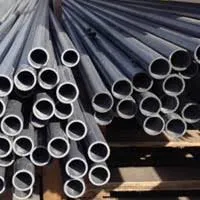
-
 Afrikaans
Afrikaans -
 Albanian
Albanian -
 Amharic
Amharic -
 Arabic
Arabic -
 Armenian
Armenian -
 Azerbaijani
Azerbaijani -
 Basque
Basque -
 Belarusian
Belarusian -
 Bengali
Bengali -
 Bosnian
Bosnian -
 Bulgarian
Bulgarian -
 Catalan
Catalan -
 Cebuano
Cebuano -
 China
China -
 China (Taiwan)
China (Taiwan) -
 Corsican
Corsican -
 Croatian
Croatian -
 Czech
Czech -
 Danish
Danish -
 Dutch
Dutch -
 English
English -
 Esperanto
Esperanto -
 Estonian
Estonian -
 Finnish
Finnish -
 French
French -
 Frisian
Frisian -
 Galician
Galician -
 Georgian
Georgian -
 German
German -
 Greek
Greek -
 Gujarati
Gujarati -
 Haitian Creole
Haitian Creole -
 hausa
hausa -
 hawaiian
hawaiian -
 Hebrew
Hebrew -
 Hindi
Hindi -
 Miao
Miao -
 Hungarian
Hungarian -
 Icelandic
Icelandic -
 igbo
igbo -
 Indonesian
Indonesian -
 irish
irish -
 Italian
Italian -
 Japanese
Japanese -
 Javanese
Javanese -
 Kannada
Kannada -
 kazakh
kazakh -
 Khmer
Khmer -
 Rwandese
Rwandese -
 Korean
Korean -
 Kurdish
Kurdish -
 Kyrgyz
Kyrgyz -
 Lao
Lao -
 Latin
Latin -
 Latvian
Latvian -
 Lithuanian
Lithuanian -
 Luxembourgish
Luxembourgish -
 Macedonian
Macedonian -
 Malgashi
Malgashi -
 Malay
Malay -
 Malayalam
Malayalam -
 Maltese
Maltese -
 Maori
Maori -
 Marathi
Marathi -
 Mongolian
Mongolian -
 Myanmar
Myanmar -
 Nepali
Nepali -
 Norwegian
Norwegian -
 Norwegian
Norwegian -
 Occitan
Occitan -
 Pashto
Pashto -
 Persian
Persian -
 Polish
Polish -
 Portuguese
Portuguese -
 Punjabi
Punjabi -
 Romanian
Romanian -
 Russian
Russian -
 Samoan
Samoan -
 Scottish Gaelic
Scottish Gaelic -
 Serbian
Serbian -
 Sesotho
Sesotho -
 Shona
Shona -
 Sindhi
Sindhi -
 Sinhala
Sinhala -
 Slovak
Slovak -
 Slovenian
Slovenian -
 Somali
Somali -
 Spanish
Spanish -
 Sundanese
Sundanese -
 Swahili
Swahili -
 Swedish
Swedish -
 Tagalog
Tagalog -
 Tajik
Tajik -
 Tamil
Tamil -
 Tatar
Tatar -
 Telugu
Telugu -
 Thai
Thai -
 Turkish
Turkish -
 Turkmen
Turkmen -
 Ukrainian
Ukrainian -
 Urdu
Urdu -
 Uighur
Uighur -
 Uzbek
Uzbek -
 Vietnamese
Vietnamese -
 Welsh
Welsh -
 Bantu
Bantu -
 Yiddish
Yiddish -
 Yoruba
Yoruba -
 Zulu
Zulu
Guide to Choosing and Utilizing T38 Drill Rods Effectively in Your Projects
A Comprehensive Guide to Selecting and Using T38 Drill Rods
When it comes to drilling in various subsurface environments, the choice of drill rod is critical to the success and efficiency of the operation. T38 drill rods are among the most popular options in the drilling industry, known for their balance of strength, durability, and versatility. This article serves as a comprehensive guide to selecting and using T38 drill rods effectively.
Understanding T38 Drill Rods
T38 drill rods are characterized by their diameter of 38 mm, designed primarily for use in the surface and underground drilling applications. These rods are typically made from high-grade steel, which ensures a robust design that can withstand significant stresses during drilling operations. The T38 designation itself relates to the dimensions and threading standards used in their manufacture, specifically designed to maintain consistency and reliability in connection with drill bits and other equipment.
Why Choose T38 Drill Rods?
1. Strength and Durability T38 rods provide a high tensile strength, making them suitable for challenging geological conditions. Their construction helps resist bending and breakage, ensuring prolonged use even in demanding applications.
2. Versatility T38 drill rods can be used in various drilling methods, including diamond drilling and reverse circulation drilling. This versatility allows operators to switch methods without needing to change the rods, making them an excellent investment.
3. Precision Engineering The threading and connection design of T38 rods facilitate smooth and secure coupling with drill bits. This precision minimizes the risk of disconnection during drilling, enhancing operational safety and efficiency.
4. Weight Considerations While sturdy, T38 drill rods maintain a manageable weight, aiding manual handling and installation. This can be particularly important in remote locations where heavy machinery may not be accessible.
How to Select the Right T38 Drill Rods
t38 drill rod a comprehensive guide to selecting and using the ...

When selecting T38 drill rods, consider the following factors
1. Application Type Determine the drilling method you will be using. While T38 rods are versatile, certain materials or construction designs may perform better with specific techniques.
2. Geological Conditions Assess the ground conditions where the drilling will occur. Harder rock formations may necessitate rods with additional features, such as special coatings or heat treatment, to improve performance and longevity.
3. Length Requirements T38 rods come in various lengths which can affect drilling depth and efficiency. Ensure you select a length that fits both your equipment and the anticipated drilling depth.
4. Connection Type Verify that the threading of the T38 rods matches your drill bit and other equipment. Compatibility is crucial for safe and effective drilling operations.
Maintenance and Care
Proper maintenance of T38 drill rods significantly extends their life and performance. Here are some tips
- Regular Inspection Examine the rods for wear and tear, especially at the joints where they connect with the drill bit. - Clean After Use Remove dirt and debris after each drilling session to prevent corrosion and accumulation of particles. - Storage Store rods vertically and protect them from moisture. Consider using racks or containers to avoid physical damage.
Conclusion
T38 drill rods are a powerful tool in the arsenal of any drilling operation, offering a blend of strength, versatility, and efficiency. By understanding their characteristics and selecting the right rods for your specific needs, you can significantly improve your drilling outcomes. Additionally, by maintaining your equipment properly, you ensure longevity and reliability in even the most challenging drilling conditions. With the right approach, T38 drill rods can lead to successful and efficient drilling projects, making them an invaluable resource in the field of geotechnical exploration.









